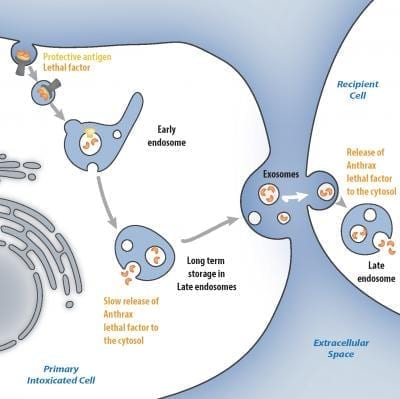The bacterium responsible for anthrax develops a strategy reminiscent of the Trojan horse tale. Its pathogenic factor is able to penetrate inside a cell in such a way that it becomes completely invisible to both the immune system and medical analysis. Furthermore, it manages to exit the cell several days later, and then it continues to poison other cells.

This mechanism was discovered by researchers from EPFL, the University of California at Berkeley and the National Institute of Health in Washington. It finally explains the reason why some living organisms succumb to the disease up to two weeks after the disappearance of the last signs of bacterial presence. “This remained a mystery for more than 50 years, said Gisou van der Goot, who heads a research unit at EPFL’s Global Health Institute. The bacteria would disappear after the administration of antibiotics, but the subject still died a few days later.”
The researchers focused in the way the anthrax toxin was able to get inside the cell. Composed of two elements – a “protective antigen” and a “lethal factor”, the toxin does not merely create a passage across the cellular membrane. Instead, it introduces itself by endocytosis, a process by means of which the pathogen is “swallowed” by the cell.
The intoxication does not stop there. Once inside the cell, anthrax’s lethal factor is sheltered by the cell’s membrane, forming an “endosome”, in which it can wait for several days. Then, it can either be released inside the cell, causing it to malfunction, or it can be released towards the external environment inside small vesicles – called exosomes – and get into another cell. “The immune system has no reason to react, since it only detects exosomes whose membrane is composed by the very same molecules making up the cell’s endosomes.” explained Gisou van der Goot.
This is the first time that scientists have been able to describe the transmission of a pathogen agent for an extended time period and throughout a long distance within the living organism. Their work has been subsidized by the Swiss National Science Foundation and the NCCR “Chemical Biology”. It was published today in the Cell Reports journal. “There is still much to learn about exosomes. The results of this research will help us to better understand them” continued Gisou van der Goot.
As for the battle against anthrax, this research will lead to the development of drugs specifically targeting the lethal factor while being able to penetrate the cell’s membrane.

